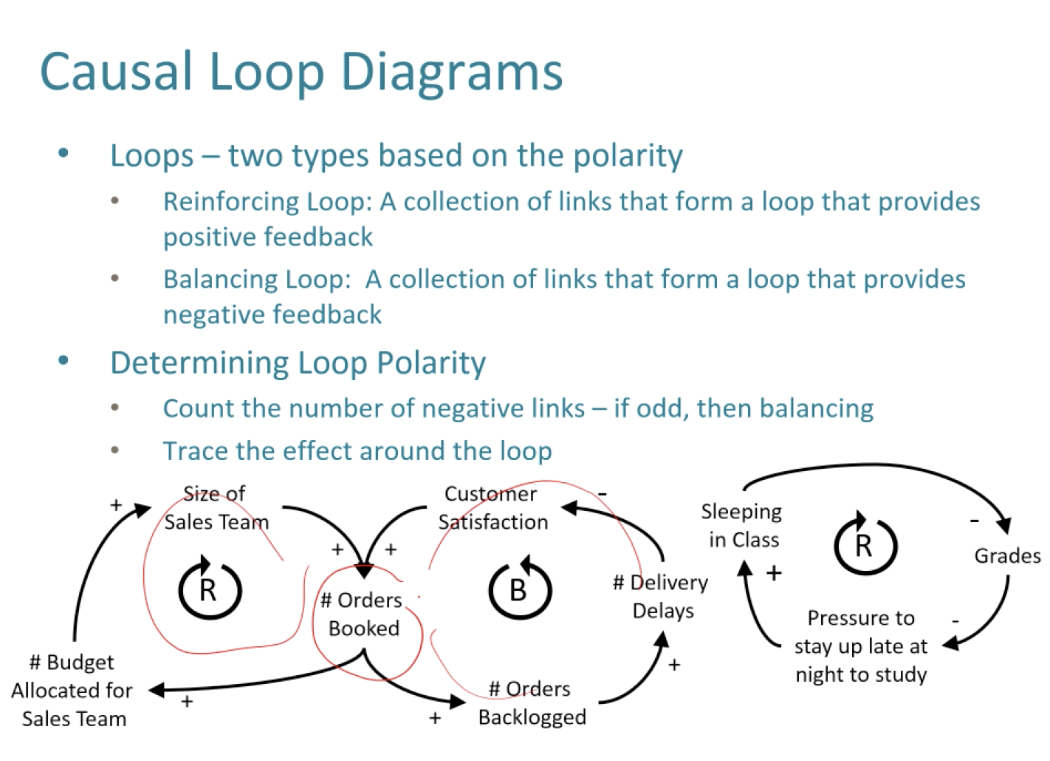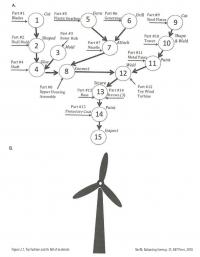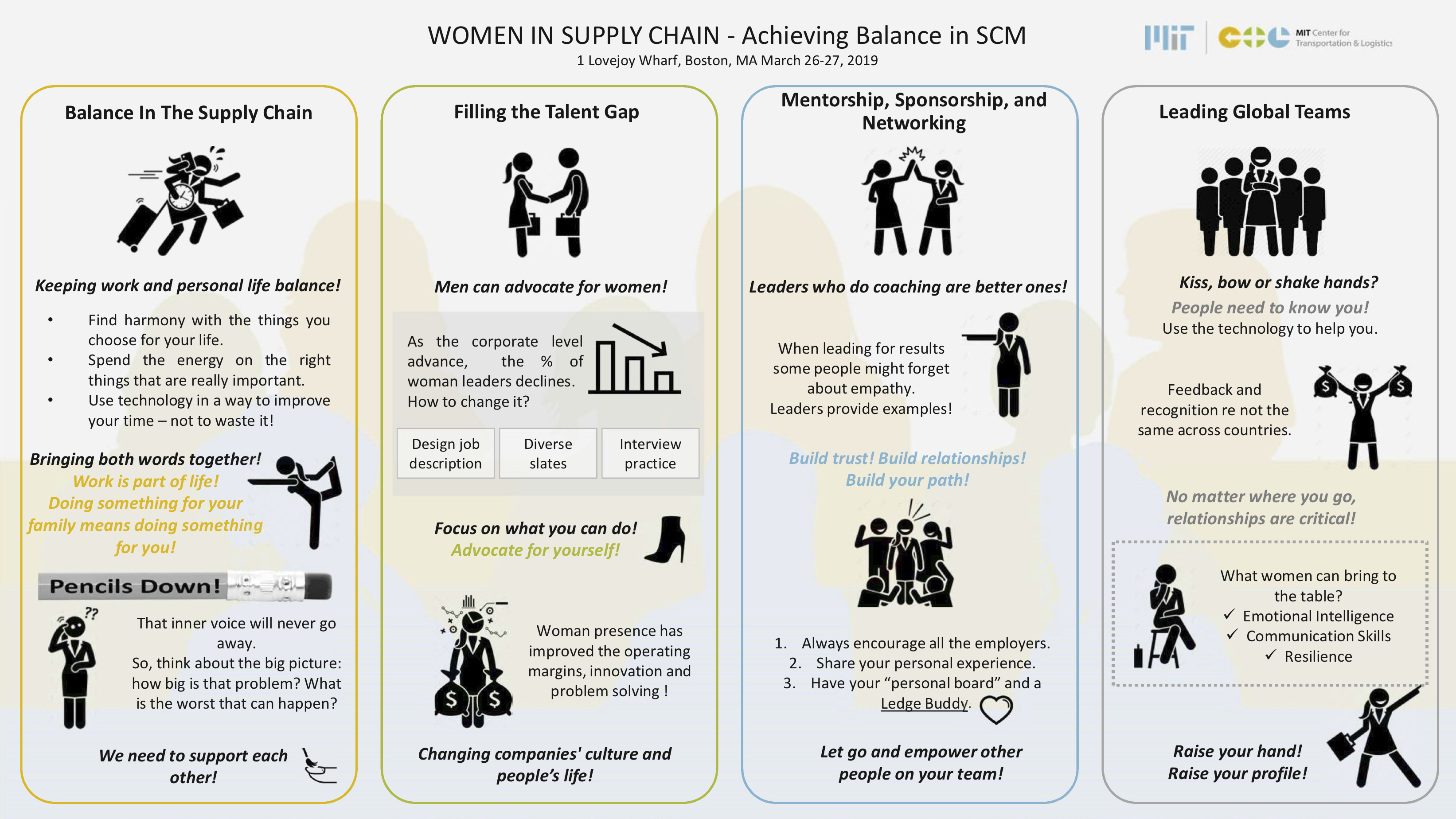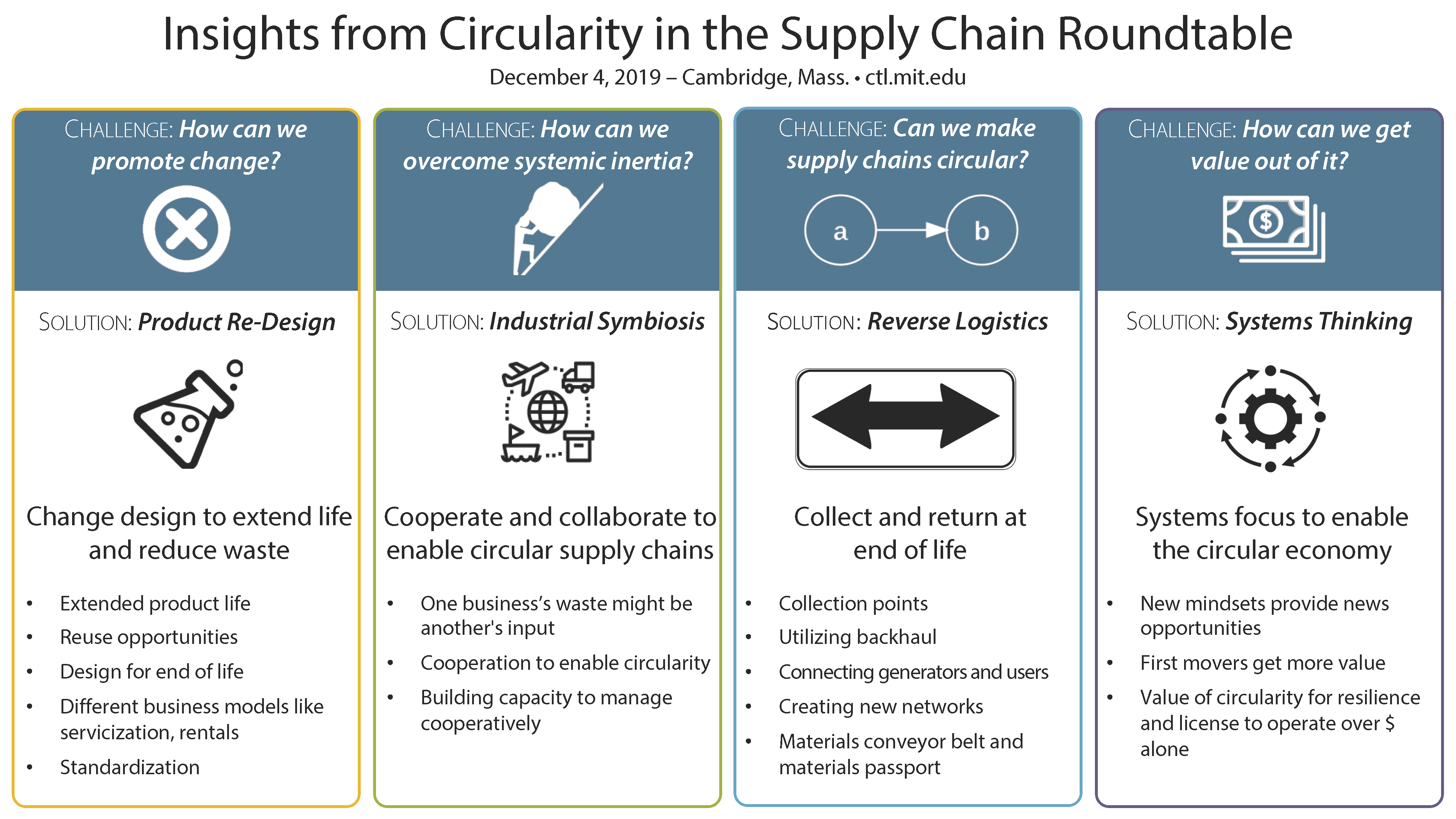Whether planned or not, 2020 became the #YearofSCM. For nearly 50 years, the Center has invested in supply chain management education, research, and outreach. As an influential node within a global network of practitioners accelerating innovation in the industry, our aim for 2020 was to publish useful and actionable snippets of our work from across all our labs and initiatives. Use the links below to navigate through some of our most popular articles and lesson plans. Thank you for joining us on this supply chain and logistics journey.
#YearOfSCM
January | February | March | April | May | June | July | August | September | October | November | December
January – New Beginnings, Emerging Knowledge
Week 1: Create Your Education Plan - January 1–5
As you plan out and set goals for yourself this year, it can be helpful to think about the principles you use to do so. Metacognition is the practice of thinking about thinking or identifying one’s cognitive process and is a reflective skill that is necessary for creativity, critical thinking, and problem-solving. Brown University's Harriet W. Sheridan Center for Teaching and Learning has a useful guide to tapping into your metacognitive side to reflect on your learning process and to use that to inform what you set out to do in the coming year.
______________________
Week 2: Understanding Vulnerability - The Resilient Enterprise - January 6–12
A firm's "vulnerability" to a disruptive event can be viewed as a combination of the likelihood of a disruption and its potential severity. Companies assess their vulnerabilities by answering three basic questions:
- What can go wrong?
- What is the likelihood of that happening?
- What are the consequences if it does happen?
Create Your Own Back-of-the-Napkin Vulnerability Sketch
______________________
Week 3: Classical Supply Chain Optimization - January 13–19
There are three motivating problems when developing optimization models in the supply chain.
- Profit Maximization
- Inventory Replenishment Policy
- Package Optimization
Discover the common features and look at some basic modeling with Dr. Chris Caplice in this online education module from the MITx MicroMasters program in SCM.
Watch the Optimization Lesson in Supply Chain Fundamentals - SC1x
______________________
Week 4: New Frontiers in Re-skilling and Up-skilling - January 20–26
Embracing the idea of lifelong learning requires a real sense of agency. Each of us needs to be both motivated and prepared to put in the effort toward making learning a lifetime priority. You can learn more about how companies are responding to their constituent thirst for knowledge in this brief from our colleagues MIT Sloan Management Review.
Read "New Frontiers in Re-skilling and Up-skilling"
______________________
Week 5: Exploding the BOM - Sustainability Sketch - January 27–February 2
Much of the environmental impact of any product depends both on what it is made of, and on how it is made. The "Make" process is the step in which a product's constituent parts are converted into finished goods via a series of manufacturing operations.
Sketch Your Green Supply Chain
February – Finding Your Passion
Week 6: Critical-Thinking Strategies for Decision-Making - February 3–9
Every day you face decisions. Some are going to be straightforward. Others are going to require some deeper thought. As you face these issues, you will have to approach them based on their timeline and their magnitude. You can use critical thinking methods to attack these issues and meet them on their own timelines and magnitudes. Critical thinking is a developed skill that allows you to make logical and informed decisions. We excerpted three short videos from Supply Chain Dynamics, our online course. Use them to whet your appetite for thinking critically.
______________________
Week 7: The Power of Learning - February 10–16
Two supply chain practitioners, one a seasoned veteran and another newer to the field, reflect on their experiences with the MITx MicroMasters® Program in Supply Chain Management. Both individuals are using the knowledge gained to enhance their professional performance. They also agree that high-quality online programs such as MicroMasters could transform professional education and increase awareness of supply chain’s role in companies.
As online programs mature and their associated communities grow, the proficiency bar in supply chain management will get higher. And more people from different backgrounds and parts of the world will be able to access education in supply chain management.
Understand how to make use of learning on your own terms
______________________
Week 8: Radical Empathy - February 17–23
The MIT AgeLab has worked with a multitude of companies who were trying to design products and features for senior citizens but were frustrated that many of them didn't catch on. What helped them improve their design not only for seniors, but for all consumers, was gaining a new perspective through radical empathy. Learn more about the concept.
Read Excerpt from the book, "The Longevity Economy"
______________________
Week 9: How to Find Your Passion as Automation Approaches - February 24–March 1

While the rise of robots and the concomitant threat to jobs have caused much consternation, historically low unemployment rates in the United States make it both more compelling and easier for companies to increase the pace of automation in facilities such as warehouses. Find your passion even facing the looming threat of automation. Our friends at the Task Force on Work of the Future have some pointers for us.
Read about Making Technology Work in Society on MIT News
March – Consumer Voices and Inquiry
Week 10: Women in Supply Chain - Achieving Balance - March 2–8
The MIT CTL Women in Supply Chain Initiative (WISCI) seeks to better understand gender balance in supply chain management. We aim to create knowledge and tools for people interested in creating more gender balance in their organizations.
In March 2019, we welcomed 60+ professionals from various industries and backgrounds to participate in our Women in Supply Chain Summit.
The summit, hosted by our supply chain exchange partner CONVERSE, sparked conversations regarding finding balance in the Supply Chain, Filling the Talent Gap, Mentorship, Sponsorship & Networking, and Leading Global Teams.
We gathered comments and insights throughout the event to help better understand the steps needed to create a balance in the field of Supply Chain. Click on the graphic to download.
Engage with Women in Supply Chain
______________________
Week 11: Green Button Logistics - March 9–15
In the era of e-commerce and climate change, consumers care a lot about the environment but have also become accustomed to convenient, fast shipping. To better understand the friction between those two conflicting concerns, the MIT Sustainable Logistics Initiative sought to find out whether consumers’ behavior can be influenced by providing information about the environmental footprint of the shipping option they select for their home delivery.
Learn More about Insights from Green Button
______________________
Week 12: Omnichannel Education - Are You Ready for the Challenge? - March 16–22
For both consumers and companies, education and upskilling are taking on a distinctly omnichannel appearance. As a consumer are you ready for the sea-change?
Here are three tips for learning managers:
- Redefine offerings to create tailored programs for your learners.
- Consider hybrid/blended formats that include rigorous online credentials plus residential programming.
- Segment "right answer" content to online, and reserve "it depends" content for in-person training.
______________________
Week 13: Adjusting Inventory to Meet Customer Demand - March 23–29
How do you adjust your safety stock requirements to meet your service levels? Having different service levels throughout the year contingent on seasonal business needs may ensure that companies will have the right inventory at the right time for their consumers.
Read the Thesis from MIT SCM Graduates
April – Sustainability Month
Week 14: Q1 Live Poll - March 30–April 5
Share your thoughts in the first quarterly live poll of the year!
What are the most important areas of your business that have you set goals or KPIs for improvement on for the coming year?
*Note: The poll will not be available until March 30, 2020.
______________________
Week 15: Debate - Is It Up to Business to Save the Planet? - April 6–12
Climate change is widely acknowledged to be the existential threat of our time, but how to address it is a significant point of disagreement. In this debate from October 2018, MIT CTL Director Yossi Sheffi and Andrew Winston, an internationally recognized advisor and expert on green business strategy, discuss the role that business should (or shouldn't) play in taking on climate change.
______________________
Week 16: Supply Chain Transparency - April 13–19
What does it mean to have a transparent supply chain? If you are under pressure to divulge more information about your operations, here's a five-minute read that can help you set a baseline and at the very least, define "transparency".
Read about Transparency in the Supply Chain

Week 17: State of Supply Chain Sustainability Annual Report - April 20–26
Preliminary results indicated that 51% of respondents were unclear as to whether their firm had existing practices to manage supply chain sustainability. The State of Sustainable Supply Chains Annual Report is designed to help companies gain a better understanding of the importance of supply chain sustainability to their enterprises, industries, and to the planet. The annual survey and report will serve to shed light on a topic that businesses are increasingly finding important.
Understand the Annual State of Supply Chain Sustainability Report
______________________
Week 18: GLEC Framework - April 27–May 3
Do you take supply chain emissions into consideration in your planning? You can. The Global Logistics Emissions Council offers an updated framework to help you understand emissions from your supply chain activities. Use the framework to: calculate annual emissions, look for hotspots and set KPIs for planning. Companies, including DHL, Maersk, Kühne + Nagel, DB Schenker, HP, PepsiCo, Dow, and Syngenta, have adopted the GLEC Framework to collect and share data on logistics carbon emissions.
Learn How You Can Use the Framework
May – Education, Completion, and Recognition
Week 19: Student Retention in MOOCs - May 4–10
Have you ever wondered about what it takes to stay invested in an online course? Our team is studying learner retention to find out what factors influence participation and completing a course. You can review some preliminary results here.
Predict and Intervene: Addressing the Dropout Problem in a MOOC-based Program
______________________
Week 20: Four Lessons from MicroMasters Teaching for Learning - May 11–17
For learning managers who are aiming to educate and assess effectively, this short paper presented at eMoocs can offer some guidance. Some take-aways. Online learning is a longer story than just a single screen-based course and is not the same as teaching in person. Learn how.
Read: Lessons from the First MicroMasters Program
______________________
Week 21: Turning Your Degree into a Job Offer - May 18–24
We spoke with Len Morrison our Career Development Officer at MIT CTL about some of the things you can do, once you have your education, to get hired. Turns out it is about knowing the role, understanding how you fit, and even about storytelling.
Read: Turning Your Degree into a Job Offer
______________________
Week 22: What can you do to improve your outlook? - May 25–31
Whether you're thinking of heading back to school or simply trying to learn on your own terms, the doors of educating yourself are wide open. In addition to the courses in SCM offered at MIT CTL, the Institute maintains many open courses. The MIT Open Learning Library is home to selected educational content from MIT OpenCourseWare and MITx courses, available to anyone in the world at any time. All material is free to use. Some resources, particularly those from MIT OpenCourseWare, are free to download, remix, and reuse for non-commercial purposes.
Learn about MIT open course library here

June – Emerging Markets
Week 23: Supply Chain Management and Logistics in Latin America - June 1–7
Latin America accounts for more than 625 million people with approximately 5% of the total world GDP. The Inter-American Development Bank has labeled Latin America as a region with large market potential. In the last 20 years, the region has moved from a low-cost market to being a significant player in the world economy. Understand LatAm with Supply Chain Management and Logistics in Latin America: A Multi-Country Perspective available in print and digital formats.
Storefront: Latin America - A multi-country perspective
______________________
Week 24: Demand Forecasting for Ebola Response - June 8–14

Research from the Humanitarian Supply Chain Lab led by Robert Rains, a 2019 MIT SCM graduate, has produced a methodology with the potential to drastically improve Ebola response and other catastrophic outbreaks. The Lab's research focuses on a key but as-yet-overlooked group: uninfected patients. By taking them into account, the study was able to find a way to forecast capacity of Ebola treatment centers and improve their efficiency, saving crucial capacity for treating infected cases.
Read: Demand Forecasting for Ebola Response
______________________
Week 25: Replenishment Policies for Retail Pharmacies in Emerging Markets - June 15–21
Pharmaceuticals account for over hundreds of billions of dollars of the global annual healthcare expenditure. This project aims to determine how a set of replenishment policies can help maintain efficient inventory levels and minimize undesired effects of non-centralized discounts and stock-outs in the stores. We did descriptive analytics to determine the replenishment policies best suited for the group of prioritized SKUs analyzed. From the SKUs analyzed the research suggests using the (Q, R) policy for high profit SKUs for an average of 33% cost reduction and (s, S) policy for low profit SKUs for an average of 37% cost reduction.
Review: Replenishment Policies for Retail Pharmacies
______________________
Week 26: Micro Supply Chain Management for Small Firms - June 22–28
Micro and small firms account for the majority of jobs in most OECD countries, and many of them represent a substantial share of the suppliers and customers of large firms. Despite the clear value of small companies, only a fraction survive in the short term and develop into high-growth firms. Traditional SCM best practices have been designed for large companies. However, very little research has been done on SCM for small businesses. Dr. Josué Velázquez Martínez presents the Micro SCM concept, which is an emerging, discipline focusing on improving the efficiency and survival of the micro and small firms by leveraging their SCM decisions.
Watch: Dr. Josué Velázquez Martínez on Micro Supply Chain Management for Small Firms
______________________
Week 27: Q2 Live Poll - June 29–July 5
Share your thoughts in the second quarterly live poll of the year.
What are the 3 most significant changes have you seen in your supply chain system over the past year?
July – Logistics: Making Things Happen
Week 28: Four Last-Mile Routes to Successful Omnichannel Retailing - July 6–12
Omnichannel retailing has become the new norm in the retail sector as companies reinvent their supply chains to offer customers multiple buying channels. Although the omnichannel model is now relatively well established, a challenge that retailers continued to grapple with is how to reconfigure their last-mile supply networks to achieve better alignment between delivery responsiveness, product variety, and convenience. Research from the MIT Megacity Logistics Lab has identified four types of such networks to better understand the last-mile omnichannel landscape, and it also proposes a process for planning and developing last-mile supply network models for omnichannel operations
Read: Four Last-Mile Routes to Successful Omnichannel Retailing
______________________
Week 29: Overcoming Obstacles to Supply Chain Circularity - July 12–18
Circular supply chains—as opposed to traditional linear supply chains—seek to work toward a zero-waste vision through system-wide innovation in business models and supply chain functions from product/service design to end-of-life and waste management. A recent roundtable identified common challenges or obstacles to adopting supply chain circularity, and the group developed insights on how those obstacles can be overcome.
Download: Overcoming Obstacles to Supply Chain Circularity
______________________
Week 30: Smart Blockchain Contracts in Ocean Shipping - July 19–25
How might blockchain-based smart contracts automate the monitoring and execution of demurrage clauses in logistics? Understand the potential benefits and threats to smart contracts with respect to legal, architecture and managerial frameworks.
Review: Smart Blockchain Contracts
______________________
Week 31: Artificial Intelligence and Machine Learning in Supply Chain Planning - July 26–August 1
Although AI dates back to the 1950s, ML’s tremendous advances have been achieved only in the past few years due to the increased amounts of computing power and data that were not available before. Indeed, 90% of the world’s data has been produced in the last two years. For example, four million videos are uploaded to YouTube every minute. Learn how these and other advances are affecting the supply chain management field in these roundtable reports.
Roundtable Report – Artificial Intelligence and Machine Learning in SCM
Roundtable Report – Data Management: Preparing for Machine Learning
August – Back to School
Week 32: Data Science as Supply Chain Job Qualification - August 2–8
Unfamiliar job titles such as Data Scientist are now part of the supply chain ecosystem, as the discipline comes to rely more and more on its ability to collect, analyze, and interpret massive volumes of data. How does a data scientist relate to the supply chain discipline?
Read: Adding Data Science to Supply Chain’s List of Job Specs
______________________
Week 33: Sandbox Tools from MMx Courses - August 9–15
We developed a suite of visual tools for common math problems from the MicroMasters courses. Have a look around and play with the sandboxes for your favorite equations! This tool allows you to play with the newsvendor model. It is an operations management model used to determine optimal inventory levels. It is (typically) characterized by fixed prices and uncertain demand for a perishable product. If the inventory level is q, each unit of demand above q is lost in potential sales. This model is also known as the newsvendor problem or newsboy problem by analogy with the situation faced by a newspaper vendor who must decide how many copies of the day's paper to stock in the face of uncertain demand and knowing that unsold copies will be worthless at the end of the day. We use sandboxes like these throughout our MicroMasters courses. You can play with all the sandboxes here.
Play in all the sandboxes here
______________________
Week 34: What Pharmacy Students in Ethiopia Can do with Supply Chain Education - August 16–22
What might pharmacy students at Addis Ababa University learn from an MIT supply chain course? The answer is quite a lot.
Research Scientist Alex Rothkopf of the MIT Humanitarian Supply Chain Lab recently taught a blended course to the Addis Ababa University (AAU) School of Pharmacy in Ethiopia. “I’ve never taught pharmaceutical students,” he says. “They’re used to a different way of learning.”
See how we brought MIT learning to a local campus (MIT News).
______________________
Week 35: Activity from SC1x - August 23–29
There are times when you need to expand your scope and think outside your own domain silo and have a look at the entire system. Review this systems thinking perspective video from our Supply Chain Fundamentals online course. The whole idea here is to think of the entire supply chain as a system that interacts with itself and with external factors. In this video we aim to understand what is a variable, what do I make a decision on, and what is a constraint? What do I have to live within? When you think about this system in this perspective, it allows you to think of what you can control, and why things get complex.
Review the 7-minute sample lesson
______________________
Week 36: Overview of SCM Master's Programs at MIT - August 30–September 6
Gain an advanced, practical, focused foundation in Supply Chain Management. Our #1-ranked Supply Chain Management master's programs combine a rigorous curriculum with unique cross-cultural experience and offer outstanding opportunities for career advancement.
MIT's SCM master's programs are optimized for early-career supply chain, logistics, and operations professionals. Advance your skills in our on-campus or blended online/residential programs, and return to the workforce at a higher level of responsibility and a higher salary.
September – Resilience
Week 37: Detecting Disruptions - September 7–13
In addition to the two dimensions of likelihood and impacts, disruptions vary on a third crucial dimension: detectability. Some types of disruptions can be forecasted or detected well before they have an impact on the enterprise, while others hit without warning. Detectability adds a time dimension to the classification of disruptions and is defined as the time between knowing that a disruptive event will take place and the first impact. Note that the detectability of an event can be positive (detection before the impact), zero (realization at the instant of occurrence), or even negative (detection after the disruption has taken place).
Read the excerpt from The Power of Resilience
______________________
Week 38: Causal Loop Diagramming for resilience planning - September 14–20
Communicating with diverse teams across locations can be difficult in the face of disruption. Simple models can help reduce error and increase understanding. Use the introduction in Supply Chain Dynamics to learn more about causal loop modeling.

Learn about causal loop diagrams for resilience planning.
______________________
Week 39: Strengthening Post-Hurricane Supply Chain Resilience - September 21–27
The modern economy has made supply chains more interconnected than ever, while also expanding both their range and fragility. Drawing on lessons learned during the 2017 hurricanes, this report explores future strategies to improve supply chain management in disaster situations.
Preview: Strengthening Post-Hurricane Supply Chain Resilience
______________________
Week 40: Q3 Live Poll - September 27–October 4
Share your thoughts in the third quarterly live poll of the year.
What has made your supply chain stronger?
*Note: The poll will not be available until September 27, 2020.
October – Emerging Technologies
Week 41: CAVE Software - October 5–11
The Computational and Visual Education (CAVE) Lab uses interactive visualization to improve data visibility, data analysis, and decision making for supply chain and logistics challenges.

The CAVE Lab provides students, researchers, and decision makers with a more intuitive understanding of and access to quantitative methods to support strategic design, tactical planning and operational decision problems in the supply chain and logistics domain and related fields. Based on a newly created physical lab space at MIT CTL equipped with state-of-the-art visualization technology, the lab is developing interactive visual interfaces to data and analytical tools, addressing complex supply chain and logistics problems.
Soon, the CAVE Lab will be looking to build a community of software developers to build and share open-source software on CAVE OS to further enhance data visualization to meet supply chain and logistics challenges.
Watch This Space!
______________________
Week 42: Supervised Machine Learning - October 12–18
One of the things that we have to grapple with in machine learning is that we're dealing with large multi-dimensional data sets. And sometimes there are 10 or 20 or 30 different characteristics or features in our data sets that are independent input variables, and we need to understand them a little bit better. Ultimately, we need humans to be able to understand what the signal is and what is driving the signal.
Learn about how dimensionality reduction can help machine learning processes in this sample lesson.
______________________
Week 43: Autonomous Vehicles - October 19–25
If you're looking for a fully autonomous vehicle in the near future, to ferry you where you need to go, you'll probably be disappointed. MIT researcher Lex Fridman talks about the potential and challenges of deep learning as well as how much progress remains to be made.
Watch Deep Learning Basics: Introduction and Overview
______________________
Week 44: Evaluating the Benefits of Blockchain Technology in Supply Chain Finance - October 26–November 1
During the past few years, blockchain technology has shown great potential to disrupt existing supply chain finance solutions because it can increase the efficiency of invoice processing and provide more transparent and secure transactions.
However, while the benefits of applying blockchain solutions in supply chain finance may be obvious, many businesses are reluctant to adopt the technology. One of the most common questions is whether blockchain is a cost-effective replacement for paper-based invoices and platforms.
This research project from Patara Panuparb, a 2019 MIT SCM graduate, provides some answers by shedding light on the benefits and costs associated with innovative blockchain solutions for participant SCF businesses.
Explore the thesis
Read the summary
November – Reaping Rewards and Giving Thanks
Week 45: Last-Mile Software Delivery Tools - November 2–8
Urbanization and customer demands are making last-mile delivery optimization increasingly complex and important for retail companies. However, these companies often do not have the tools and/or capabilities to include customer-specific or environmental constraints such as time windows (implicit or explicit) and congestion patterns in their delivery plans. Hence, there has been considerable capital investment in routing tools.
However, these investments are devalued if drivers do not follow the information provided by the routing tools. Two SCM graduates from 2019 conducted a capstone project to study the extent to which delivery crews deviate from the planned stop sequence of their routes. They also analyzed what drives these deviations and the economic implications thereof.
______________________
Week 46: The Revealing Words People Use to Describe Retirement - November 9–15
How do you imagine your retirement? What words come to mind? In a 2018 MIT AgeLab study, researchers asked these same questions to get a feel for how participants imagined their life in retirement. The responses were surprisingly consistent. Of the 990 adults who were interviewed, only 27 words were needed to make up half of collected data. More surprisingly, the ten most frequent words respondents used to describe retirement accounted for almost one-third of all responses.
______________________
Week 47: Cutting Plastics without Cutting Profits - November 16–22
The increasingly strident public outcry over the huge volumes of plastic waste clogging our environment demands a response from the companies held responsible for putting it there. However, as Alexis Bateman writes, in some cases like the detergent market, these companies can reduce the amount of plastic in supply chains and also meet or even exceed their profitability targets. It's a win-win for everyone.
Read: Can We Cut Plastics without Cutting Profits?
______________________
Week 48: From the Archives – When Life Gives You Lemons... - November 23–29
From the archives: When life gives you lemons, you should make lemonade—or so they say. The truth isn't quite that simple. In this video from 2011, the MIT Supply Chain Management program pays homage to lemonade stands and teaches a serious lesson about relying solely on technology to propel your business forward.
______________________
Week 49: Stranded – A Truck Driver Holiday Tale - November 30–December 6
Last December, a special kind of holiday miracle happened in the trucking world. It’s an inspiring story about compassion in a time of urgent need and utter chaos.
Read the Story from David Correll
December – Wrapping Up
Week 50: Recapping Q1–Q3 Polls - December 7–13
______________________
Week 51: What Lies Ahead? - December 14–20
______________________



